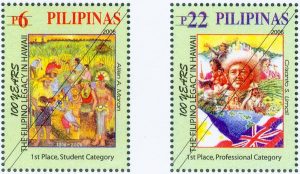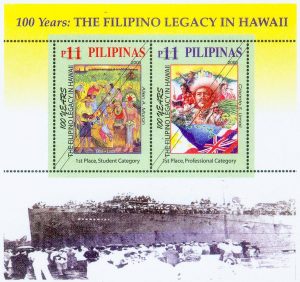Trivia about the Filipino Legacy in Hawaii
It was in December 20, 1906 that the ship Doric docked at Honolulu, carrying fifteen Filipinos (one of whom brought along his fighting cock) along with a handful of Chinese, Japanese and Sikhs. Eleven of the Filipinos were single, four were married. The oldest was fifty-six and the youngest was fourteen. All of them originated from the coastal area of Candon in llocos Sur. Little did these men know that they were making history by being the firs group of Filipinos to settle in Hawaii, part of what became the first wave of Filipino migration to the United States of America.
Five of these men belonged to one family, headed by Simplicio Gironella with his four sons (Mariano, Vicente, Francisco and Antonio). The group also included two sets of brothers (Mauricio and Celestino Cortez, and Prudencio and Cecilio Sagun). The other six were Filomeno Rebollido, Marciano Bello, Emiliano Dasulla, Apolonio Ramos, Martin de Jesus and Julian Galmen. Francisco Gironella spoke fluent English and acted as interpreter for the group. All were eventually sent to live in the main Japanese camp at the Olaa Plantation in Big Island, Hawaii, located five miles south of Hilo.
Two months afterward, the second group of recruits from the Philippines numbering thirty people with two women and two children arrived on February 25, 1907. The third batch of recruits arrived on July 19, 1907 with forty-three of them, including eight women and eight children. This migration continued on, and was followed by major waves of migration that also brought Filipinos to other parts of the U.S.
Today, the United States of America hosts more than 2.7 million Filipinos, nearly 276,000 of whom reside in Hawaii. At present, Filipinos in Hawai account for 24{1104248511d637c6a51014dcaacb77de829b1de96a4faa7392b7bed9a15aa427} of Hawaii’s population. They have made permanent mark in the state’s political, economic and cultural life. Whereas, Filipinos first came to Hawaii as plantation workers and indentured laborers, Filipinos in Hawaii today are successful professionals, and prominent citizens In business, government, politics, academe and the arts.
Filipino migration to Hawaii is said to have paved the way for the continued migration of Filipinos to the United States of America. It has given opportunities for self-fulfillment, and to showcase the virtues of industry, determination and excellence.


Recent Comments